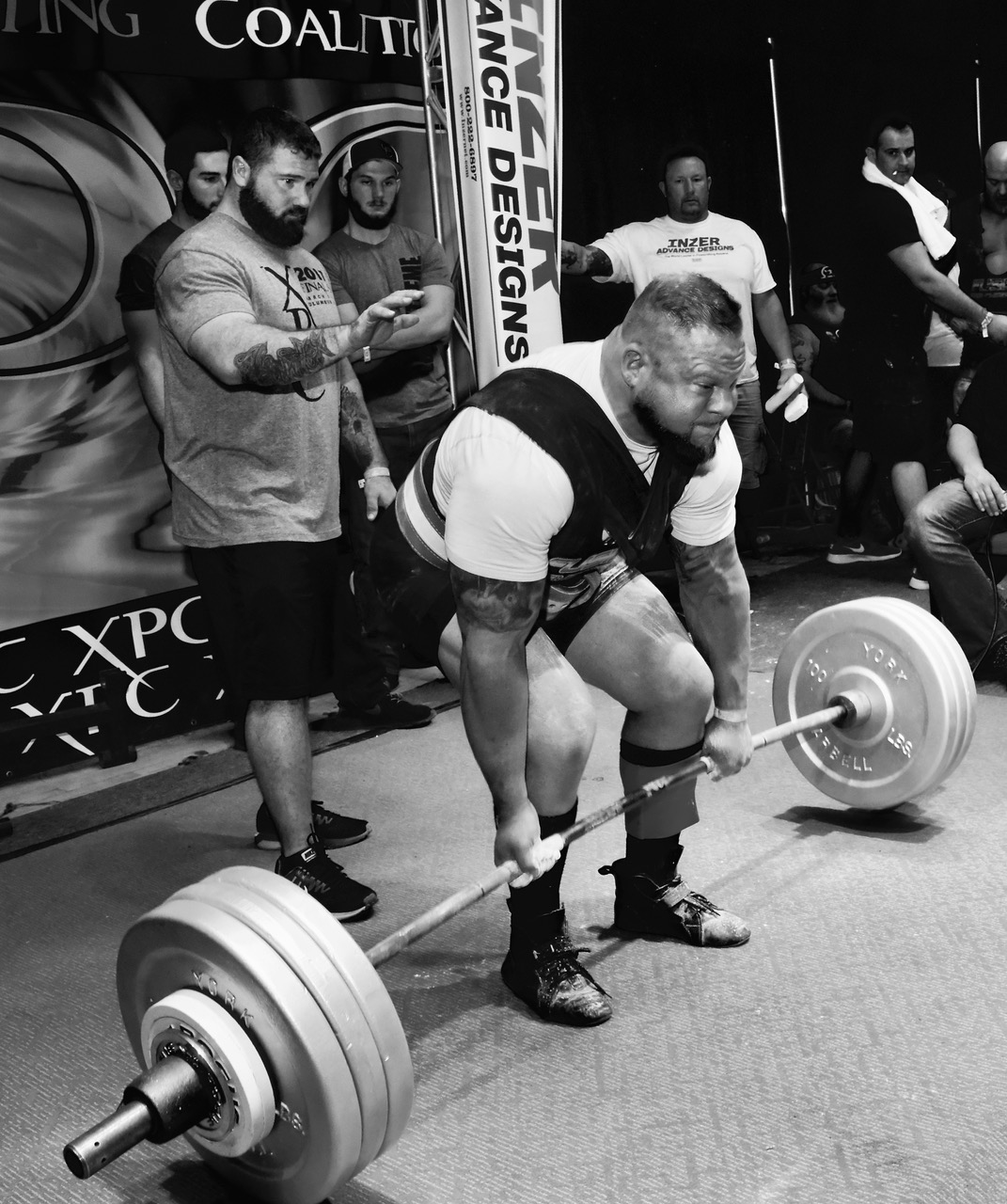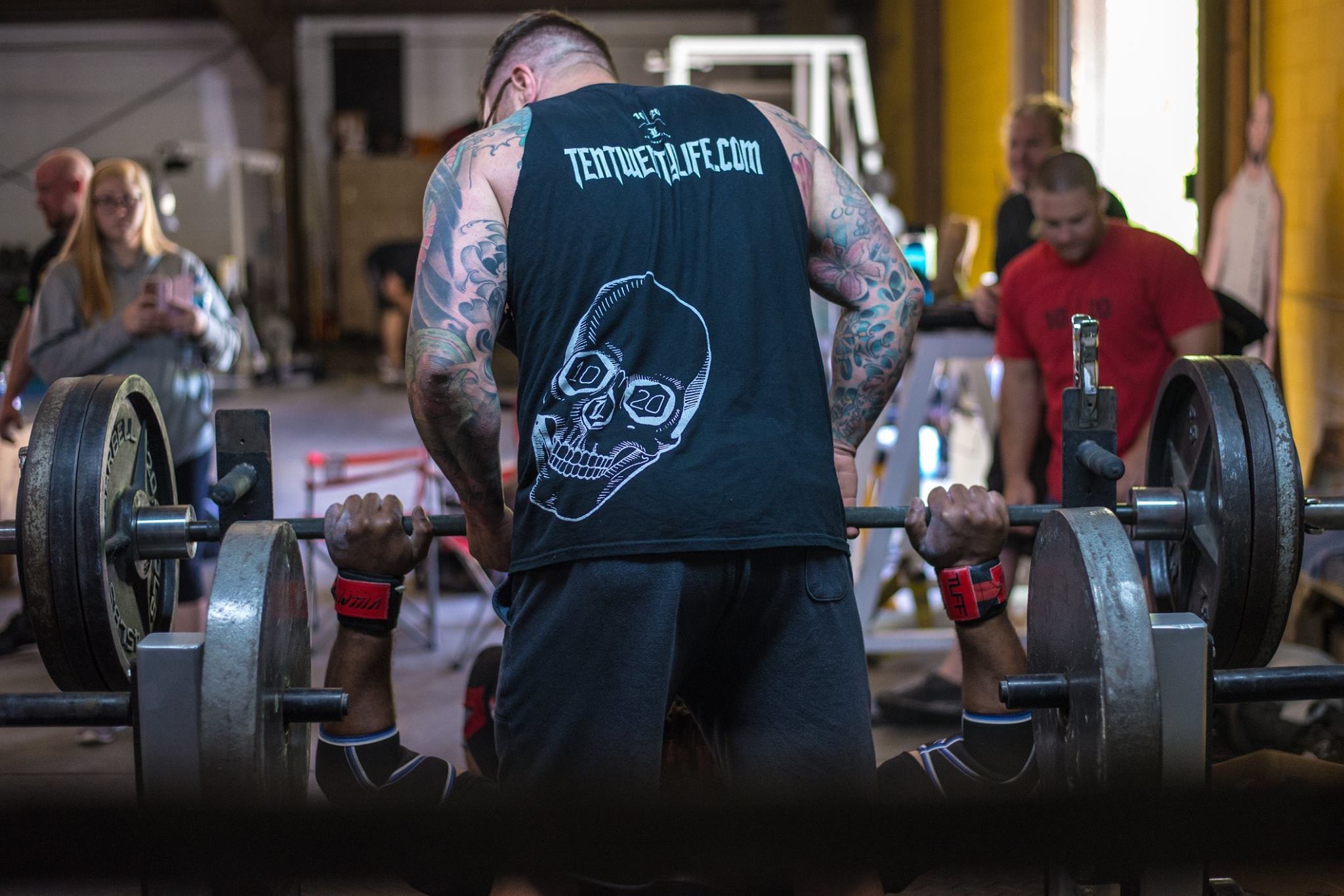
04 Jun Efficient Training
By Dain Soppelsa
Before I started utilizing the 10/20/Life principles, I honestly thought I was training intelligently and efficiently. I had a rough outline of what I wanted to accomplish in the gym leading up to a meet. I thought I was training to improve my weaknesses by rotating my max effort exercises based on what I needed to improve upon. I thought I was doing enough free squatting in my training to have myself amply prepared to perform on meet day. I thought that I was getting a good mix of assistance work to hit all my important muscle groups. I thought I was doing the most effective training template possible. I thought I had it all figured out and then one day I was introduced to the most efficient way of training in the form of 10/20/Life.
When I saw my first 10/20/Life training block, the first thought that went through my head is, “there is no way this is enough work and I’m going to lose so much speed without doing weekly speed work.” I expressed my concerns to Dan Dalenberg, one of my training partners, who had written our training block. He said to simply do what’s written. No more and no less. Trust the process and be patient. “That’s easy for you to say,” is what I was thinking. You’re used to this program. I’m not. Nevertheless, I agreed to just trust that it would work and decided to give it a fair chance.
Almost immediately, I became aware that just because something looks a certain way on paper does not mean that’s how it will actually work out. I realized that just because you don’t go heavy on your main movement every week, does not mean that the workout is light. The assistance work just kicked my butt. By the end of the workouts, I was every bit as tired as I would’ve been the way I had trained previously. So, after that, I stopped resisting and embraced every bit of 10/20/Life. I stuck to the RPE as it was written for the day and did all the assistance work as prescribed. I even stayed away from speed work for a few months.
All this made me realize that I hadn’t been looking at my training the right way. I had been looking at how much I needed to do to convince myself that I was doing enough work, instead of doing what I absolutely needed to do to keep getting stronger and accomplish my goals. I found out how much of my training wasn’t really necessary, which was way too much of it. I realized that you don’t get brownie points, or a ribbon for doing more than is necessary to improve. I had done things a certain way for a decade and I just couldn’t believe how much I could do in the gym and not only avoid losing strength, but actually get stronger.
The name of the game for me is doing this as long as I can. I love powerlifting and I love competing in it. I’m 34 years old. I’m not old, but I’m definitely not a spring chicken. That’s the problem with us humans – we age. Your mind may tell you that you can recover from all this work, but your body may just disagree with you. In order to keep doing what I’m doing, I realized that I needed to streamline things and think in terms of efficiency. Once I changed my way of thinking, I realized how much better my body felt. My joints didn’t hurt all the time and I don’t have to go to the chiropractor as much. Here I am, the healthiest I’ve ever been as a whole and I’m in my mid thirties.
There will be trial and error when it comes to finding out the correct balance for what works for you as a lifter, what doesn’t work, or what isn’t completely necessary. The only way to figure out the right formula is by trying different things and by evaluating yourself. If something works, keep doing it. If it doesn’t, you have to stop doing it and try something else. Everyone reacts to certain stimuli differently. So don’t make your decisions based on what works for someone else because that won’t necessarily work for you. You have to go through the process yourself.
Once you’ve developed a winning formula for what works best for you, don’t be swayed by social media and YouTube. New fad training programs will come and go. Just because there is something new going around, doesn’t mean that what you’re doing needs to change. If it’s not broken, don’t fix it. The only time you’ll need to change what you’re doing in the gym is if and when your weaknesses change, or something you’re doing stops being effective. Everything will work, but nothing works forever. Keep track of what you’re doing and what’s working or not working, so you know when something needs to change.
People will doubt what you do and how you do it. Don’t let that affect what you do. There is no shortage of people that will tell you what you need to do and how to do it. Don’t take someone’s advice unless is comes from a legitimate source and/or you have asked for advice. Just keep in mind that more isn’t always better. Your body needs to function like a well oiled machine when it comes time to compete and that is more likely to happen when you are healthy and peaked properly. Gym PR’s are nice, but the world isn’t going to end if you don’t attempt one every week. Do what’s necessary and save the rest for when it counts, which is on the platform.
Get the 2nd Edition 10/20/Life here.
Dain Soppelsa
Latest posts by Dain Soppelsa (see all)
- Dain Soppelsa Log Offseason Week of 2/25/18-3/3/18 - March 5, 2018
- Dain Soppelsa Training Log Offseason Week Of 2/18/18-2/24/18 - February 25, 2018
- Dain Soppelsa Offseason Week of 2/11/18-2/17/18 - February 18, 2018








Sorry, the comment form is closed at this time.